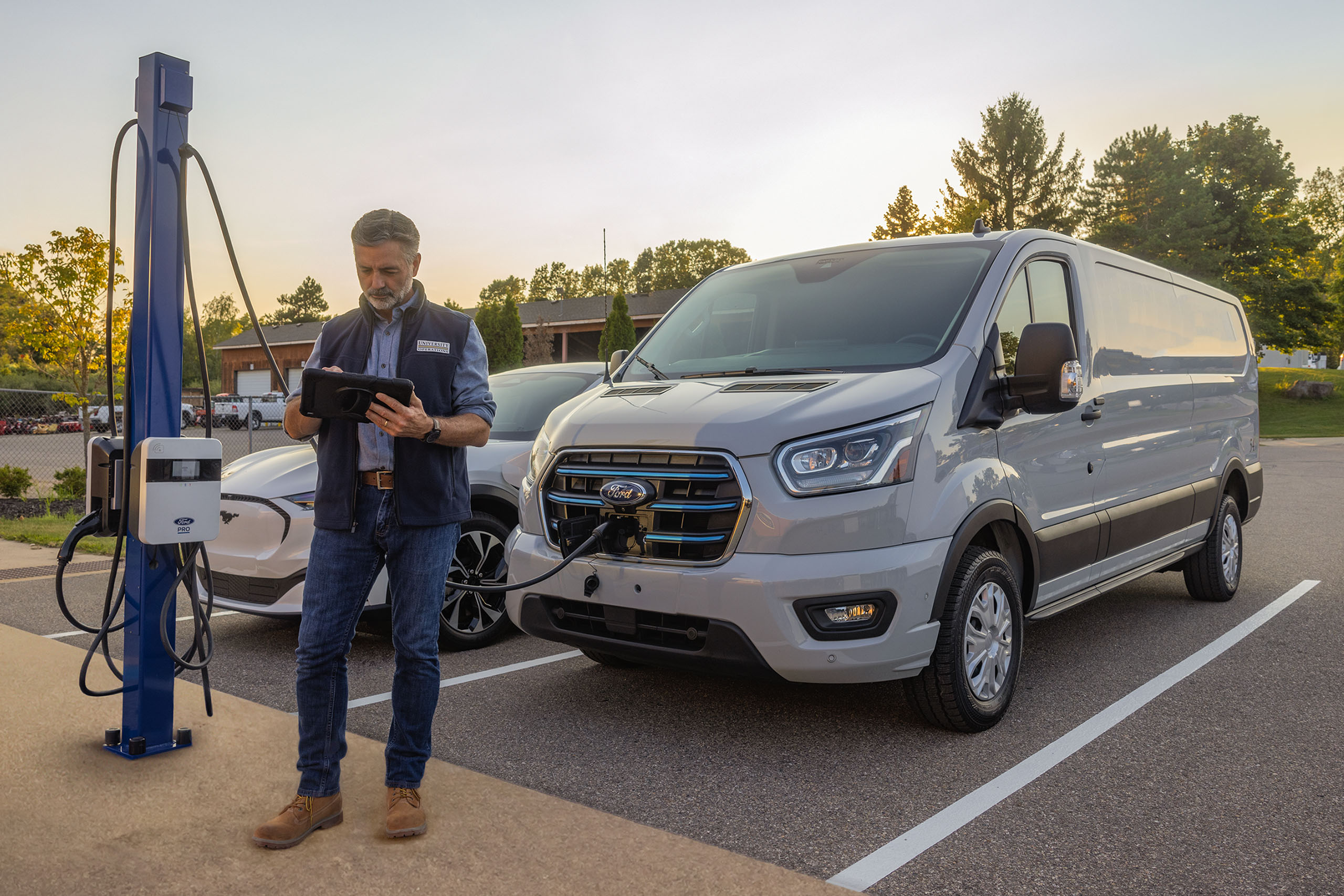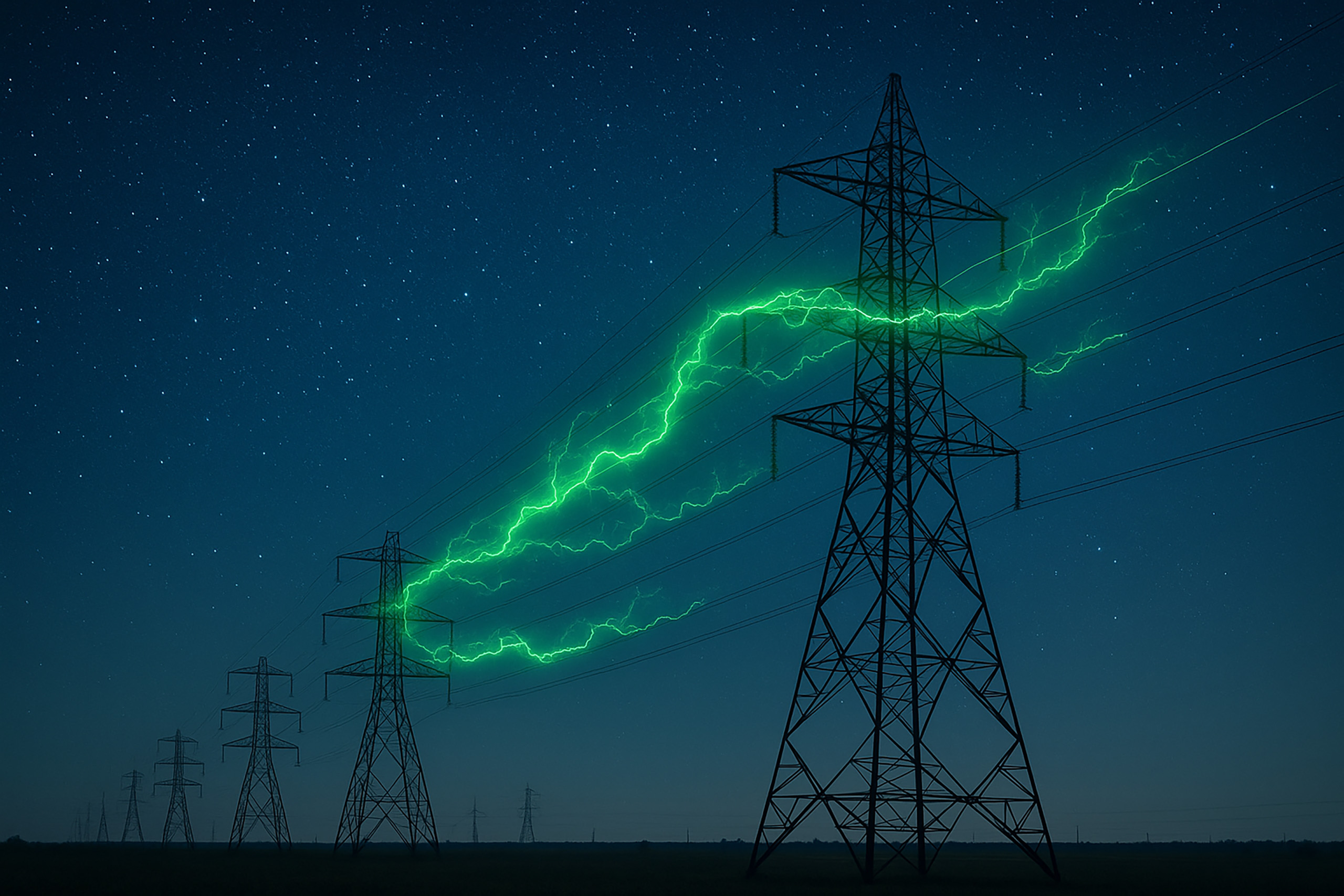

By now, you’ve probably heard that transitioning your fleet to electric vehicles (EVs) could save your business a lot of money. True, your business saves on mileage with EV charging, along with other cost advantages. Plus, your business can enhance its reputation by becoming an early adopter in the push toward sustainability.
Electrifying your fleet is more complicated than it seems, though. In fact, you could end up accidentally costing your business more money. Future Energy helps businesses identify and avoid critical mistakes as they consider integrating EVs into their fleets.
Electrifying Fleets

Companies in disparate industries are quickly turning to EVs. By 2050, EVs could make up 31% of the global light-duty vehicle (LDV) fleet, an increase from 0.7% from 2020, according to Electrek.
California is in the process of electrifying airport shuttle buses, an estimated 950 vehicles at 13 airports statewide. The transition is part of the state’s 2019 Zero-Emission Airport Shuttle Regulation.
The United States Postal Service announced in July that 50% of its new purpose-built postal vans will be electric by 2023.
In September of 2022, the rental car company Hertz announced it had ordered 175,000 EVs from General Motors, an addition to its 65,000 EVs from Polestar and 100,000 Teslas.
Identifying Optimal EV Charging Infrastructure
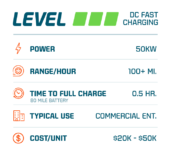
The types of EV chargers you install onsite depend upon your company’s unique needs. Future Energy works to understand how electrification ties in with their client’s specific business needs. Together, we gauge how your fleet currently operates: mileage, routes, cargo, and other factors. Then we evaluate charging requirements necessary to keep your EVs running optimally.

Level 3 chargers, or direct-current fast chargers (DCFC), are the quickest way to charge an EV. A level 3 charger operates off 480-volt power lines and takes about half an hour to fully charge an EV.
Level 2 chargers use alternating current and 240-volt power. Level 2 chargers are the most common type of commercial charger, delivering about 40 miles of range per hour.
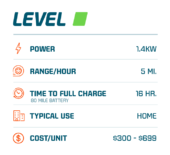
Future Energy recommends that companies install at least one level 3 charger in case of urgent need to recharge a fleet vehicle. However, companies can manage their electrical costs more effectively through overnight, long-term charging using level 2 EV chargers.
Future Energy’s Interface helps companies monitor and control their energy conservation so your fleet is optimally charged without exceeding peak load and incurring extra costs.
Hauling with Electric Vehicles
Future Energy works with companies to consider their specific use cases when developing electrification strategies. For example, businesses with hauling needs have special considerations. The Fast Lane Truck found the range of the all-electric Rivian R1T decreased as it towed a trailer, from 314 to 168 miles. An electric truck fleet thus may need to charge quickly in the middle of the day to get back on the road.
Saving Money with an Electrified Fleet
There are many factors to consider when determining the total cost of ownership of an electric fleet:
- The EVs themselves: sedans, trucks, vans, other vehicles
- EV charger hardware and associated costs
- Electrical infrastructure upgrades to support EV charging
- Software to network the EV chargers and monitor electrical use
- Training for employees
Incentives for Using Electric Fleets
Electric cars emit between 28% and 81% less carbon dioxide than a traditional vehicle.
The global push toward sustainability has led toward the creation of numerous financial incentives for companies to purchase EVs and to contribute to the installation of EV infrastructure. For example, starting in January 2023, the federal Clean Vehicle Credit reduces the cost of an EV by up to $7,500 as part of the Inflation Reduction Act of 2022.
Future Energy’s Financial Incentive National Database (FIND) tool identifies 99% of available money for companies seeking to electrify.
Using an EV Fleet to Save on Operational Costs
The National Electric Vehicle Infrastructure Formula Program is making $615 million available to states for fiscal year 2022. However, the US Department of Transportation has issued minimum standards for companies who wish to receive this funding. In particular, there is a minimum annual uptime requirement of 97%. Uptime means that an EV charger’s hardware and software are online, available for use, and dispensing electricity as expected. Companies will have to submit data quarterly to demonstrate adherence to this requirement.
Future Energy’s Interface software helps companies to meet governmental requirements by providing access to real-time and historical data about EV charger uptime.
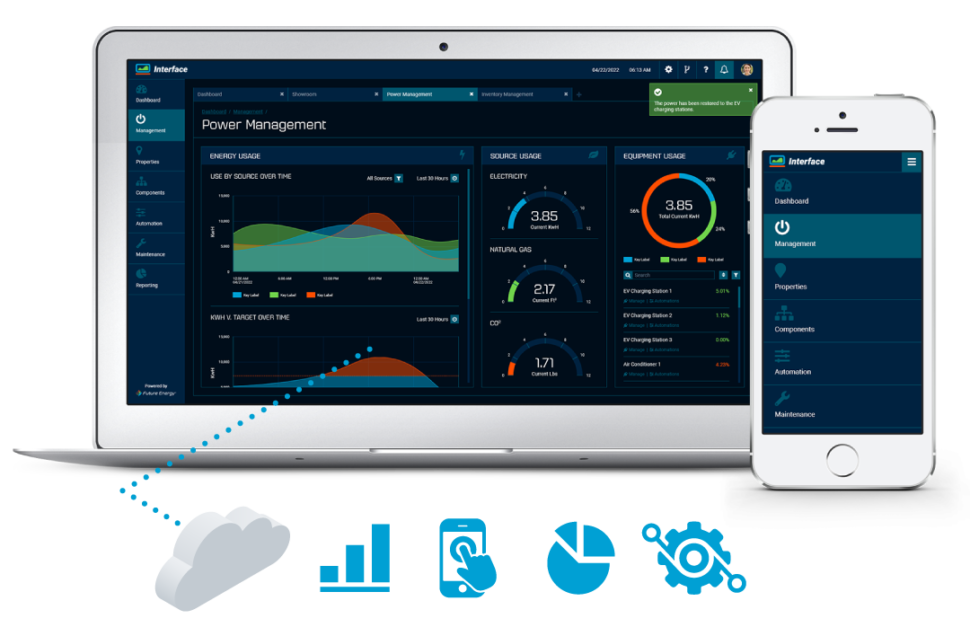
Using an EV Fleet to Save on Maintenance Costs
In addition to lower fuel costs, EV fleets save between 25% and 40% on maintenance costs compared to traditional vehicles, according to Consumer Reports. For instance, Ford estimated the maintenance charges for its new F-150 Lightning Pro pickups, which likely will serve as an EV workhouse for many businesses that rely on LDV fleets. Ford found that the Lightning Pro had a 40% maintenance cost reduction versus the F-150 with a 2.7-liter EcoBoost V6 engine over eight years and 100,000 miles.
Developing a Strategy to Optimize the Use of an Electrified Fleet
Most businesses don’t have an in-house person who specializes in electrical infrastructure, EV charging, and fleet operations. By contrast, Future Energy consultants understand the nuances of electrification and exactly how it integrates with your business objectives.
Location of EV Chargers
For example, a business contacted Future Energy with plans to install EV chargers with an estimated infrastructure cost of $1.5 million. Future Energy consultants worked with the company to change the location of the EV chargers and the approach to power delivery. These changes reduced infrastructure cost to $250,000.
Security Concerns
On public-facing EV chargers, customers pay for electricity at the time they charge. Your fleet’s chargers likely won’t have a similar point-of-sale system, so your business could be vulnerable to energy thieves.
An energy thief poaches electricity from unsecured EV chargers when they are not in use.
That’s why Future Energy’s ChargeParc™ solution includes security hardware with remote monitoring features. Plus, Interface can turn off EV chargers when they aren’t in use.
Employee Training
Another important aspect to electrifying your fleet is proper training for your employees. Future Energy provides additional value to your business by offering training surrounding EV and energy conservation management.
Start Building a Winning EV Fleet Strategy
It’s more than likely that your business will save on mileage with EV charging, but that’s not the whole story. Contact Future Energy today to learn how to optimize the value of your EV fleet in ways you may not have even considered.

